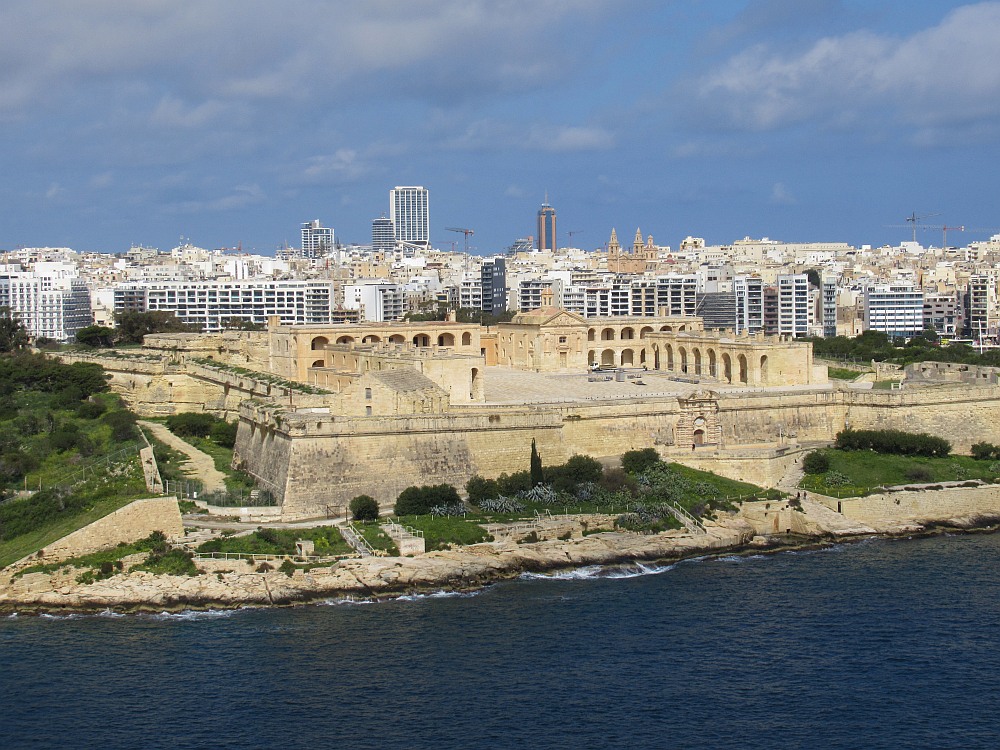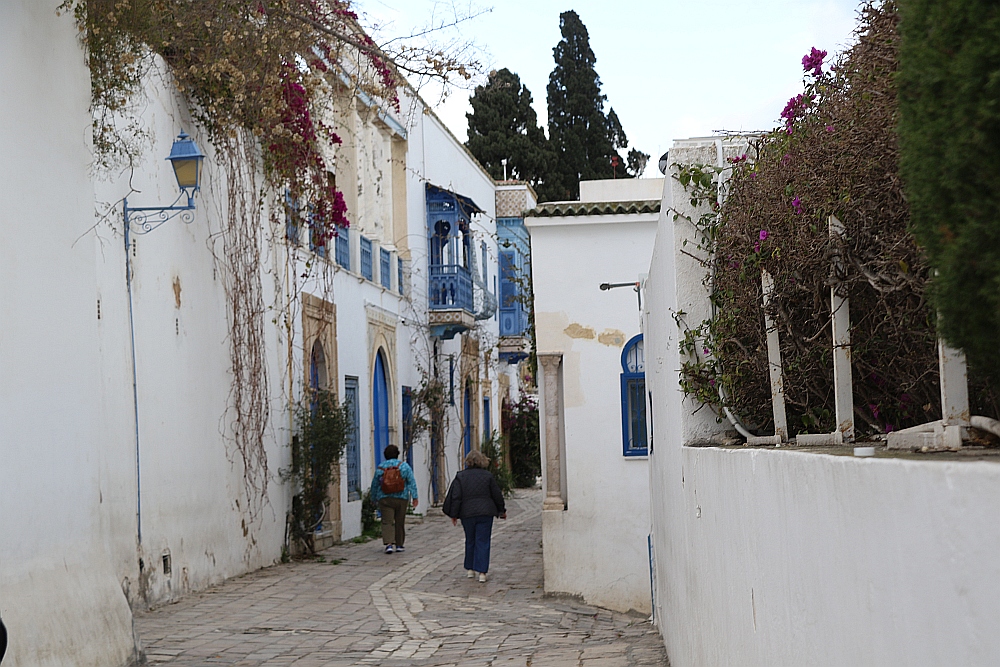Back Roads Of Iberia: Spanish Paradores and Portuguese Pousadas Day 9
Back Roads Of Iberia: Spanish Paradores and Portuguese Pousadas
Day 09 - Saturday, April 1, 2017 - Travel from Carmona to Ronda; Visit Bull Ranch & Traditional Lunch; Explore Ronda with Rikardo
Even though the sun did not wake up until after 7:00, we knew we were going to have a clear crisp morning. The temperature was in the low 40's but it was not long before we warmed.
We had gorgeous views as we drove away from our Moorish Fortress. Today, the first day of April, does not have the significance of April Fool’s Day as it does in the United States. Rikardo was very adamant about the fact so we were all very polite today - no pranks!
We drove on a back road, a narrow gravel bumpy path that might have given the name "Backroads of Spain and Portugal" to our tour. Flat fields of barley, rape, beans, and other grains, extended for as far as the eye could see. The soil was very dark, almost like the black dirt of Iowa.
As we made our way slowly through the back-country Rikardo told us more about education in Spain. Children are required to attend school from the age of three to 16.
Public schools that get government funds are required to educate both boys and girls together in the same classes. Private schools, generally supported by the Catholic Church segregate genders.
The land of Andalusia was under Arab control from 700's until 1,100's. Many of the customs and names of the cities reflect the borders of the frontier and the influence of the Arabs.
Our morning break was in the small, whitewashed town of El Coronil, where we stopped at the San Sebastian Cemetery for a unique restroom break. After walking to the gate we found it was closed.
A woman named Sylvia, told us that the keeper of the keys had a new girlfriend and that he was late. Evidently he did not even come to work at all today. We went into the town and found a coffee shop full of locals enjoying a Saturday morning coffee.
Gennie talked to several elderly bicycle riders who shared a piece of fig bread and told us of their morning's ride from Morón and back, a 50 to 60 kilometer circuit. Interacting with the locals and learning more about their lives is an important reason we travel.
By 11:00, we were back on the road, continuing through more rolling hills with olive groves. We stopped at an Arab castle, the Castillo de las Aguzaderas. The fortress was built over a well, an important defense in the ancient times.
As we traveled south toward Ronda, the southern most point of our journey, Rikardo pointed out the white villages, another holdover from the Arab times. The houses were built close together with winding labyrinth roads to discourage invaders. The whitewashed homes reflected the hot summer's rays.
The countryside became hillier and even mountainous. There were still olive trees planted on the steep slopes and also wild oak trees of the Sierra de Grazalema.
We were able to see a huge dam and spillway that blocked the Guadalquivir River. We had another photo stop at El Mogote Recreational Area. There was an incredible view of the white village of Zahara that had not changed in a thousand years.
The whole area encompasses Sierra de Grazalema Natural Park. The reservoir supplies drinking water for the lower villages. Water sports are allowed, but motorized vehicles were prohibited to protect the purity of the water.
The climb to Ronda took us to over 2520 feet. At 1:15 we went directly to the bull ranch where we met our guide, Neiba. We had a light lunch of salad, beef stew, with melon for dessert. After lunch we had a tour and hike around the ranch, Reservatauro Ronda, created by Rafael Tejada, an active bullfighter.
Starting in the test ring we observed where the future mother’s (cows) are tested to evaluate their courage and aggression. Strength, stamina, and bravery are hereditary traits coming from the female lineage.
The ranch breeds the most lean and mean bulls for fighting. The rest are served on the lunch menu. The cows that pass the evaluation are used as breeders and put in natural environments with a breeding bull of high quality and also famous bloodlines.
The Spanish Fighting Bulls, or Torro Bravo, are raised on the ranch for four years before being sold for the ring. Neiba explained that the reason that bulls are always killed in Spain was that they are very smart and remember every experience – they can never fight twice!
The cost of raising the bull for four years exceeds the cost of selling the bull for fighting. Therefore, the ranch also raises purebred Andalusian, also known as Pure Spanish horses. This working ranch also had a lively tourism business and allowed visitors to understand bull fighting and the practice of raising fighting bulls.
In the indoor arena we met Rafael Tejada, a famous bullfighter, and the owner of the ranch, who answered our questions about his profession. We also had a demonstration of the horses and the herding dogs that round up the cattle and the horses on the ranch.
We left the ranch at 4:00 and drove back to Ronda. We took a walk through the beautiful city park while Luis took our luggage to our Parador, the former city hall converted to a beautiful inn. We walked along the El Tajo Gorge; not for the faint of heart or those who fear heights.
Rikardo arranged for us to have laundry done in the city. For only 14 Euros, we could wash 20 pounds of clothing. Almost everyone took advantage of the offer. There was free time to catch up on our GarciaTrips website and get ready for dinner at 8:00.
The day was long as travel days are, but we enjoyed the sites and learned so much more about the controversy of bullfighting. Some call it an art, a sport, or extreme cruelty. Our guide Neiba told us she cried when she saw the bull being killed. More facts:
Contrary to the popular image abroad, the majority of contemporary Spanish people do not approve of bullfighting. The practice has even been banned in the Canaries (since 1991) and in Catalonia (since 2009). The heartland of bullfighting is essentially Andalusia and Castille (mostly in and around Madrid).
http://www.eupedia.com/spain/trivia.shtml
Accommodations: Parador de Ronda Hotel - - - Meal: B, L, & D
To receive $100 per person off your first reservation with OAT, mention the following information when reserving your Overseas Adventure Travel Trip:
Mr. Victor Garcia Customer #673062
Overseas Adventure Travel:
Back Roads Of Iberia: Spanish Paradores and Portuguese Pousadas
Rikardo López Elduayen
Comments
Post a Comment!The art of bullfighting, described by you, was very fascinating. I did not know that a bull never fought twice! After spending so much money on a bull and then one time in the ring, and they are gone. WOW This was a very informative and interesting day, to say the least. Thank you for covering my eyes when you got to that "jumping off" place. LOL I am terrified of heights. Keep up the good journalism - I still say you should consider writing a book! I would buy one for sure!!
Featured Journal
Day 18: Mediterranean Navigation
Day 18 - Wednesday, March 19, 2025 – Disembark Ship & Return to USA
It was a dark and rainy morning when we put our luggage outside of our cabin door at 4:15. We met three of our fellow passengers also on the same flight...










